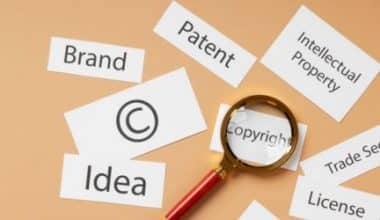Efficient and professional invoicing is key to ensuring that you are paid promptly for your products or services. If you don’t know how to streamline your billing process to save time and maintain a polished image as a business owner, you are in the right place. I’ll give you 10 invoicing best practices for an effective and professional billing process.
So, whether you’re a business owner or freelancer, this article contains top tips and best practices that will help you master invoicing with ease and professionalism.
Key Points
- Invoicing best practices involve creating and managing invoices efficiently to ensure prompt payment and maintain professional client relationships.
- Sending invoices promptly after delivering services or products is crucial for maintaining a steady cash flow.
- Including contact information on invoices promotes transparency and trust, while keeping detailed records ensures accuracy and streamlines financial processes.
- These practices enhance the efficiency and professionalism of your billing process, ensuring timely payments and strong client relationships.
10 Invoicing Best Practices For Effective And Professional Billing Process
Invoicing is a crucial part of any business, as it ensures that you get paid for the products or services you provide. To make sure your billing process is effective and professional, here are 10 best practices to keep in mind.
#1. Be Clear and Concise
When you’re putting together an invoice, first, be clear and concise with all the information. This includes a detailed description of the products or services offered, the rates for each item, and the payment terms. By providing this information upfront, you can prevent any confusion or disagreements down the line.
In other words, see your invoice as a friendly communication to your client. That’s where you’re outlining what was delivered, how much it costs, and when payment is expected. If you’re transparent and straightforward, it’ll help in getting paid promptly and strengthen your professional relationship with your client.
Remember, a well-written invoice not only serves as a billing document but also as a tool to maintain good communication and trust with your clients.
#2. Use Professional Software
Investing in professional software for invoicing can truly make a significant difference in how you manage your billing process. Imagine you have just completed a project for a client, and now it’s time to send out the invoice. Instead of spending hours manually creating an invoice from scratch, you simply open up your invoicing software.
With just a few clicks, you can customize the invoice with your company logo, add the project details, and input the costs. The software automatically calculates the total amount due and generates a polished, professional-looking invoice. You can even set up reminders for late payments and track which invoices have been paid.
This streamlined process not only saves you time but also enhances your business’s image by presenting a polished and organized billing system to your clients. Plus, it helps to ensure that you get paid promptly for your hard work. Investing in professional software for invoicing is a smart move for any business looking to improve efficiency and professionalism in their billing process.
#3. Set Clear Payment Terms
Setting clear payment terms is vital when invoicing clients. By clearly outlining your payment terms on the invoice, you can avoid any confusion and ensure that both parties are on the same page. This includes specifying the due dates for payment and the acceptable payment methods.
When you communicate your payment terms clearly, you are effectively managing expectations. Your clients will know exactly when payment is due, which can help encourage them to make timely payments. This will also help you maintain a healthy cash flow for your business.
In addition to specifying the due dates, I advise you to clearly state the acceptable payment methods. Whether you accept credit cards, bank transfers, or other payment options, make sure your clients are aware of how they can pay you.
#4. Send Invoices Promptly
Time waits for no one so sending invoices promptly is among the invoicing best practices process you should always do. When you send out an invoice right after delivering your products or services, you’re not only reminding your clients of the payment due but also ensuring a steady cash flow for your business.
The sooner you invoice, the sooner you can get paid. If you’re prompt with your invoicing, you’re showing your clients that you take your finances seriously and that you expect the same level of professionalism from them.
Plus, sending out timely invoices reduces the risk of payment delays or even non-payment. I mean allowing you to better manage your finances and plan for the future. So, don’t procrastinate when it comes to the invoicing best practices process. Just get those invoices out promptly and keep your cash flow in check!
#5. Follow Up on Overdue Payments
There’s an old saying that goes ‘The squeaky wheel gets the grease,’ and when it comes to following up on overdue payments, this couldn’t be more true. It’s important to keep track of unpaid invoices and send friendly reminders to clients with overdue payments. By doing so, you’re showing that you are serious about getting paid on time.
You know life can get busy and sometimes things slip through the cracks. Your clients may have just forgotten to make the payment or are facing their own challenges. But sending a friendly reminder is a way to nudge them gently and prompt them to take action.
Your clients will appreciate your professionalism and dedication to keeping things on track. So, don’t be afraid to implement this invoicing best practices process when it comes to following up on payments. It’s all part of the business.
#6. Offer Multiple Payment Options
As a business owner, making it easy for your clients to pay you is key to ensuring a smooth and convenient transaction process. How? One way to achieve this is by offering multiple payment options to cater to different preferences.
Let’s say you have just provided a valuable service or product to your client, and now it’s time to settle the payment. By offering various payment methods such as credit cards, bank transfers, or online payment platforms, you are giving your clients the flexibility to choose the option that best suits their needs.
For example, some clients may prefer the ease and convenience of paying with a credit card, while others might feel more comfortable with a bank transfer for larger transactions. So, with these alternatives, you are showing that you value your client’s convenience and are willing to accommodate their preferences. Check out this
#7. Include Contact Information
Contact information is also important in invoicing best practices. Always display your contact information on the invoice. This helps clients to easily reach out to you in case of any queries.
One common way I like to do this is by placing my contact details right at the top of the invoice, usually under my business logo or name. This way, it’s the first thing that catches the client’s eye when they open the invoice.
Then, I include my phone number, email address, and even my business address if applicable. Providing multiple ways for clients to get in touch ensures that they can choose the method that works best for them.
Additionally, I always make sure the contact information is in a clear font so that there’s no chance of it being overlooked. After all, communication is key in any business, and I want my clients to feel comfortable reaching out to me at any time.
#8. Provide Detailed Descriptions
Here you need to itemize your products or services on the invoice along with quantities and rates. This helps clients understand what they are being billed for. For example, instead of simply listing “Consultation Fee – $100”, you can break it down further. You can state it this way: “Consultation Fee for Marketing Strategy Session – 1 hour at $100/hour”.
This detailed description does different things in one word. First, it specifies the service provided and also the quantity and rate, giving the client a clear understanding of what they’ll pay.
#9. Keep Records Organized
Business isn’t child’s play, so you should implement this invoicing best practices process to keep your records organized. How would you feel if you sent out an invoice to a client for a project completed, and they claim they never received it? I know you’ll feel sad.
Without proper records, you may struggle to prove otherwise or even track the payment status effectively. But when you have detailed records of all invoices sent and received, you’ll be able to streamline your financial processes and ensure smooth communication with clients. So, do the needful to avoid stories.
#10. Express Gratitude
Expressing gratitude to clients is a powerful way to nurture relationships and encourage repeat business. As Zig Ziglar once said, “You can have everything in life you want if you will just help enough other people get what they want.”
When you show appreciation for your client’s business with a heartfelt thank you note on their invoice, you are not just expressing gratitude, but also showing that you value their support. This simple gesture can go a long way in building trust and loyalty, leading to long-lasting partnerships. Remember, a little appreciation goes a long way in business.
So, with these best practices, I assure you that your invoicing process will be effective and professional. Also, it’ll contribute to the financial health and reputation of your business.
Before that, I have a comprehensive checklist to guide you further not to make mistakes, download it now!
Comprehensive Invoicing Checklist
How Do You Invoice More Effectively?
It’s very simple, but I advise you to be focused when invoicing to be more effective. The key is to ensure that your invoices are clear, concise, and professional. Make sure to include all necessary details such as the services provided, rates, payment terms, and due dates. Additionally, always follow up promptly on any late payments to maintain a healthy cash flow. And finally, you can streamline the invoicing process and receive your payment faster.
How Should A Professional Invoice Look?
A professional invoice should include the business’s logo and contact information at the top, followed by the client’s details and a unique invoice number. It should clearly outline the services or products provided, including descriptions, quantities, rates, and total amounts.
Additionally, it should include payment terms, due dates, and accepted payment methods for clear communication and prompt payment. Finally, don’t forget to thank your customer for their business. Here is a sample of how a professional invoice can look:

How Can I Improve My Invoice Accuracy?
One effective way to achieve accuracy is to double-check all information on the invoice before sending it out. This includes the billing amount, billing address, payment terms, and item descriptions. Keeping detailed records of all transactions can also help in ensuring accuracy.
That’s not all! As I stated earlier, use accounting software or online invoicing tools to cross-check the invoicing process and reduce errors. When you do all these, your customers will trust your invoices and be ready to have smooth financial operations for your business.
How Do You Reduce Invoicing Errors?
No customer will tolerate errors in any invoice, and that’s why you need to follow the above invoicing best practices. To reduce invoicing errors, ensure accurate data entry, double-check all calculations, use invoice templates, and maintain clear communication with clients for any clarifications or updates. Remember, precision and attention to detail are key to providing error-free invoices.
Meanwhile, I recommend these articles for you:
Personal Brand Statement Mistakes: I Reviewed 1000 Profiles, and 90% Get This Wrong
Content Websites Mistakes You Must Avoid (Learning These the Hard Way Cost Me $32k)
Related Articles
The Authentic Facts About HR Automation
7 Affiliate Recruitment Tools for Finding the Perfect Affiliates for Your Brand
Fiverr Competitors in 2024: Top 11 Platforms





